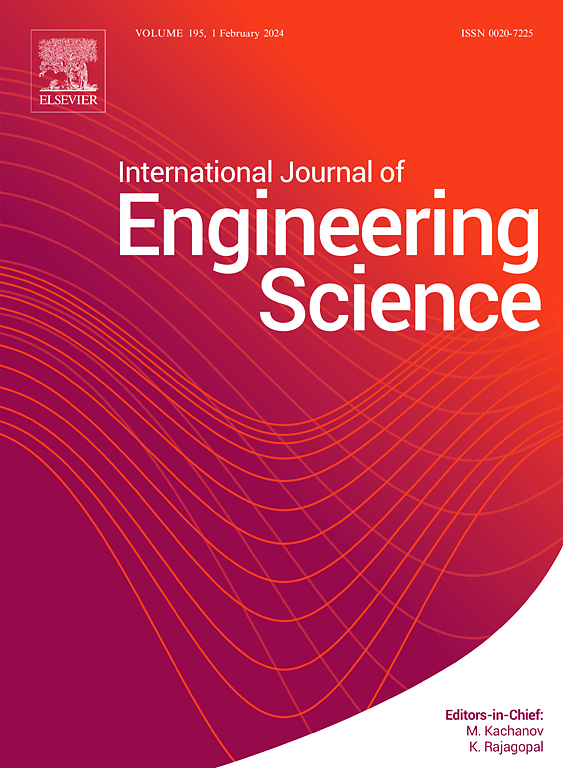碳纳米管的电动能转换效率
IF 5.7
1区 工程技术
Q1 ENGINEERING, MULTIDISCIPLINARY
International Journal of Engineering Science
Pub Date : 2025-04-23
DOI:10.1016/j.ijengsci.2025.104263
引用次数: 0
摘要
碳纳米管(CNTs)中的压力驱动流的电动能量转换(EKEC)因其潜在的高转换效率而备受关注。现有的 EKEC 理论对这一问题做了许多简化假设,如表面电荷固定在表面不能移动、滑移长度与管道直径无关、表面电荷密度与溶液浓度脱钩等。为了获得更精确的转换效率,本文对之前的 CNT EKEC 理论模型进行了修正,重点研究了表面电荷移动性和管道直径对滑移长度和转换效率的综合影响。此外,表面电荷密度不再被视为常数,而是 CNT 内部电解质溶液浓度的函数。结果表明,考虑表面电荷迁移率会降低 EKEC 效率。然而,减小管径可以提高 EKEC 效率。为了使 EKEC 效率最大化,我们给出了相应参数的最佳值。本文获得的最大 EKEC 效率为 18.8%,是在压力驱动下浓度为 2 mM 的氯化锂溶液流经半径为 15 nm 的 CNT 时获得的。本文章由计算机程序翻译,如有差异,请以英文原文为准。
Electrokinetic energy conversion efficiency in carbon nanotubes
The electrokinetic energy conversion (EKEC) of pressure driven flow in carbon nanotubes (CNTs) is of great interest due to its potential high conversion efficiency. The existing EKEC theories had made many simplified assumptions for this problem, such as the surface charge is fixed on the surface and can not move, the slip length is independent of pipe diameter and the surface charge density is decoupled from the solution concentration. In order to get more accurate conversion efficiency, the prior theoretical models of EKEC in CNTs are revised in this paper by focusing on the combined influence of surface charge mobility and tube diameter on slip length and conversion efficiency. In addition, the surface charge density is no longer viewed as a constant, but a function of solution concentration of the electrolyte solution inside the CNTs. Results show that considering the surface charge mobility will reduce the EKEC efficiency. However, the decrease of tube diameter could enhance the EKEC efficiency. In order to maximize the EKEC efficiency, we give the optimal values of corresponding parameters. The maximum EKEC efficiency obtained in this paper is 18.8 %, which is obtained for the pressure driven flow of a LiCl solution with a concentration of 2 mM through a CNT with a radius of 15 nm.
求助全文
通过发布文献求助,成功后即可免费获取论文全文。
去求助
来源期刊

International Journal of Engineering Science
工程技术-工程:综合
CiteScore
11.80
自引率
16.70%
发文量
86
审稿时长
45 days
期刊介绍:
The International Journal of Engineering Science is not limited to a specific aspect of science and engineering but is instead devoted to a wide range of subfields in the engineering sciences. While it encourages a broad spectrum of contribution in the engineering sciences, its core interest lies in issues concerning material modeling and response. Articles of interdisciplinary nature are particularly welcome.
The primary goal of the new editors is to maintain high quality of publications. There will be a commitment to expediting the time taken for the publication of the papers. The articles that are sent for reviews will have names of the authors deleted with a view towards enhancing the objectivity and fairness of the review process.
Articles that are devoted to the purely mathematical aspects without a discussion of the physical implications of the results or the consideration of specific examples are discouraged. Articles concerning material science should not be limited merely to a description and recording of observations but should contain theoretical or quantitative discussion of the results.
 求助内容:
求助内容: 应助结果提醒方式:
应助结果提醒方式:


